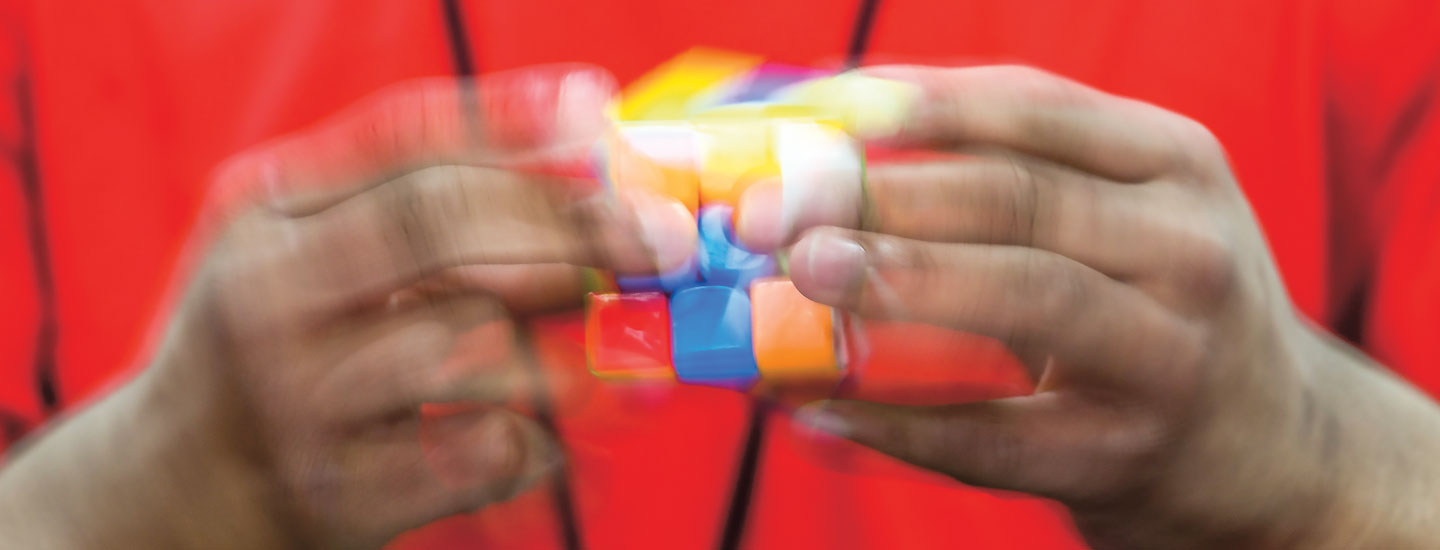COURTESY OF RUBIK’S CUBE/WWW.RUBIKS.COM
CUBE MASTER: Max Park, age 17, is one of the world’s best speedcubers.
The room is silent as 17-year-old Max Park studies the Rubik’s Cube-style puzzle on the table in front of him. Each side of the toy has four rows of four squares showing a jumble of colors. When Max is ready, he lifts his hands from the table and picks up the cube. A timer begins counting and his fingers fly, twisting and turning the toy at a lightning-fast pace. Max drops the cube back onto the table. Each side now shows one solid color. It took him only 18.42 seconds to solve—a new world record.
The crowd watching the feat at a competition last year erupted into cheers and applause. Max’s dad, Schwan Park, was nearby clapping too. He was proud not just of his son’s most recent accomplishment but also of how far Max had come to get there. That’s because Max has autism. This condition can make it hard for people to communicate, socialize, and sense the world around them (see Understanding Autism).
The room is silent. 17-year-old Max Park studies the puzzle on the table in front of him. The puzzle is in the style of a Rubik’s Cube. Each side of the toy has four rows of four squares in a mix of colors. When Max is ready, he picks up the cube. A timer begins counting and his fingers fly. He twists and turns the toy at lightning speed. Max drops the cube back onto the table. Each side now shows one solid color. It took him only 18.42 seconds to solve. That’s a new world record.
A crowd was watching at this contest last year. They cheered and clapped. Max’s dad, Schwan, clapped too. He was proud of his son’s latest feat, but he was also proud of how far Max had come to get there. That’s because Max has autism. This condition can make it hard for people to communicate, socialize, and sense the world around them (see Understanding Autism).

